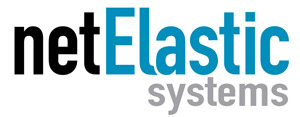Network virtualization continues to build momentum. Verizon CEO Hans Vestberg recently announced that Verizon’s journey to virtualize its various networks was 60% complete. And a few months earlier AT&T CTO Andre Fuetsch reiterated AT&T’s goal of virtualizing 75% of its network functions by 2020. Many other carriers (large and small) are following suit and virtualizing their networks.
Virtualization and the Broadband Network Gateway
With software playing a rapidly growing role in all aspects of operator networks, broadband network gateways are also becoming virtualized. In fact, a survey showed that over 90% of operators with broadband networks plan to deploy Virtual BNG. That’s no surprise, given that vBNGs offer greater flexibility and scalability, and at lower price points.
Virtual BNGs are currently provided by vendors in three general groups:
- Large, legacy router vendors trying to move away from their core competency
- Broadband access equipment vendors attempting to move from hardware to software-based business models
- Software vendors
Legacy Router Manufacturers
Large router manufacturers are trying to move away from their core competency (hardware) to stimulate sales growth, and almost all have released virtualized versions of their broadband network gateways. However, these solutions still revolve around their core competency (hardware). As a result, they can’t offer all the benefits of a Virtual BNG solution built from scratch. Legacy router vendors’ expertise, and most importantly their profit margins, still reside in the hardware.
Broadband Access Equipment Vendors
Traditional broadband access vendors are also transitioning to software. However, these broadband access vendors are selling virtual BNG (or subscriber management software) on their own hardware.
These subscriber management solutions lock service providers into vendors’ proprietary hardware, which can result in less flexibility and more costs. This also runs against the industry trend toward x86-based servers which offer flexibility, openness, and cost savings. Broadband access equipment vendors are trying to be “all things broadband” to service providers by offering subscriber management solutions, but this approach also brings with it vendor lock-in and inflexibility.
Software Vendors
Most software companies now selling vBNG have added it to their existing lineup of software products, as a product extension. These include firms focused on virtual routers and software platforms. For these firms, vBNG is an add-on to their core competency (in vRouters or software platforms).
A pure play Virtual BNG company builds the software from the ground-up. Their domain expertise is Virtual BNG. Although these firms are focused solely on vBNG, many lack the infrastructure and resources needed to support an internet service provider’s large and growing subscriber base.
A Singular Focus on vBNG (with dedicated resources)

netElastic is a software company with deep roots in software-defined networking (SDN) and network functions virtualization (NFV), and was one of the first companies to offer a Virtual BNG. From the beginning, netElastic has been focused on vBNG.
While large router manufacturers and broadband access equipment vendors are trying to move to software, software development is part of netElastic’s DNA. And unlike many pure play companies with limited resources, netElastic has over 40 engineers dedicated to vBNG.
netElastic and Intel Reach New Level of vBNG Performance
netElastic vBNG runs on commodity, x86 servers. To help accelerate network virtualization, netElastic and Intel are working together to maximize vBNG performance. Based on their collaboration, recent test results show netElastic vBNG achieved data packets being forwarded at close to wire speed at 256 bytes on a single 25G port, while server performance reached 300 Gbps. These performance results are a major milestone in vBNG performance.
So, are All Virtual BNGs Created Equal?
No, not all vBNGs are created equal. Like Verizon’s recent announcement and AT&T’s before it, the future of networking is software running on commodity servers, which lowers costs while also increasing flexibility and scalability.
While virtual BNGs from legacy hardware vendors offer improvements, their software is still locked into their hardware. And legacy hardware networks are inflexible, difficult to scale, and expensive to maintain and upgrade. In addition, vBNGs offered by broadband access equipment vendors may not support all access methods (such as IPoE, PPPoE, L2TP on IPv4, v6, and Dual Stack) or important networking protocols such as VxLAN, QinQ, and LAG.
netElastic’s mission is to help service providers transform their networks through network virtualization. To accomplish this, netElastic’s software-based BNG was built from the ground up based on input from eight of the top twenty carriers worldwide (and many smaller ones).
In summary, the power of netElastic’s singular focus on vBNG, combined with dedicated engineering expertise and experience enables netElastic to deliver innovative vBNG solutions to service providers worldwide.
To learn more, please download Next Generation Virtual BNGs.

